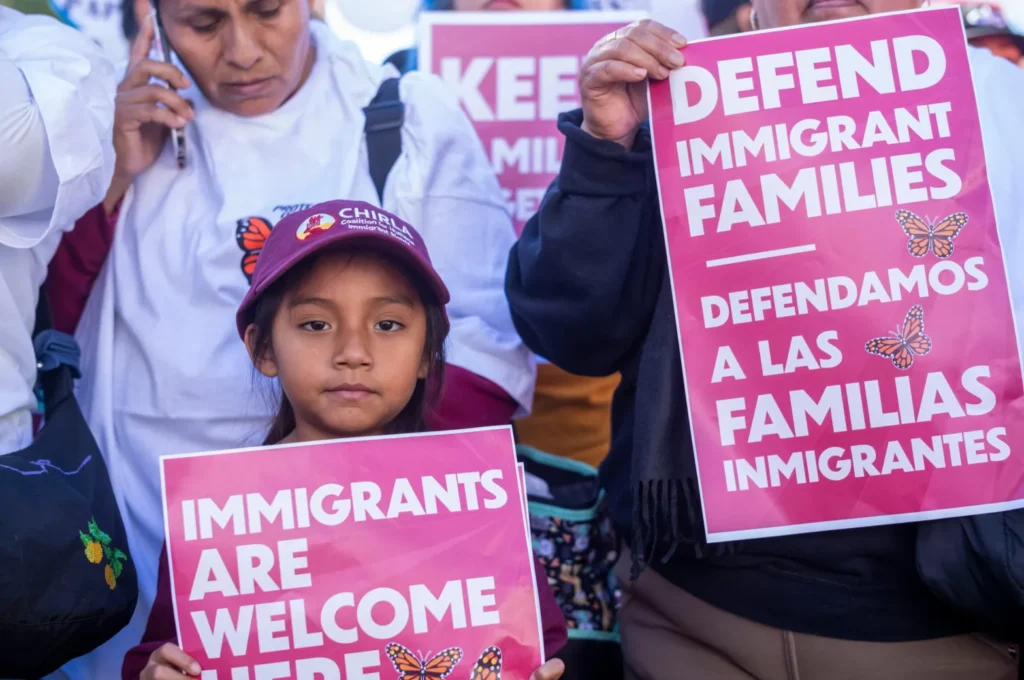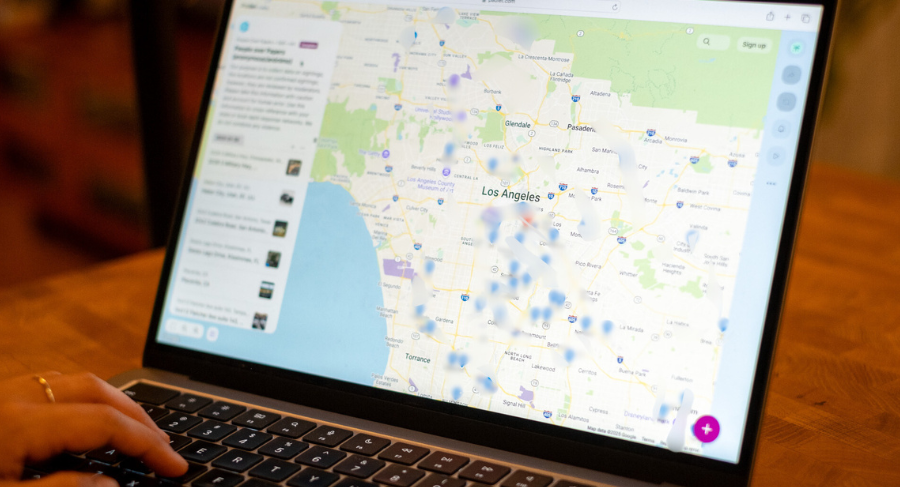Alejandra Molina | Boyle Heights Beat
As reports of alleged U.S. Immigration and Customs Enforcement (ICE) sightings flood social media and new interactive mapping platforms, immigrant rights advocates are urging people to verify claims before posting.
Posts documenting suspected immigration enforcement have been spreading online since the inauguration of President Donald Trump, whose administration has reportedly directed ICE to set quotas for arrests. Trump also ended policies that prevented immigration officers from arresting immigrants at sensitive locations like schools and churches.
On Jan. 26, Homeland Security Investigations’ L.A. office posted on X that it was working with local ICE and DEA partners to conduct “enhanced law enforcement operations” in line with Trump administration priorities.
Well-intentioned, unverified and unclear posts documenting immigration activity can lead to “fear and hysteria,” said longtime community activist Carlos Montes, and in turn, “people don’t take the kids to school, don’t go to work, don’t go out shopping.”
“It creates this semblance of paralysis in the community,” said Montes, a member of social justice group Centro CSO.
Groups like Centro CSO and Legalization For All have shared guides for the public to grasp how to film immigration enforcement activity ethically and to recognize the differences between raids, checkpoints, and arrests.
They urge the public to take photos or video from a safe distance without exposing the identities of those being targeted and to take note of exact date, time, and location. Some guides recommend against livestreaming to avoid creating unnecessary fear if the event is not an immigration operation.
An illustration by Barrio Drive titled, “Spread Power Not Panic,” urges the public to report ICE sightings to local rapid response networks.
The Los Angeles Rapid Response Network has been in place since about 2006, but it has taken on an added sense of urgency after Trump was elected president in November. Led by the Coalition for Human Immigrant Rights (CHIRLA), the network is seeking volunteers to help verify reports of immigration activity.

CHIRLA’s spokesman Jorge-Mario Cabrera said the public should share their documentation with the network by calling their hotline at 888-624-4752. He urges people to be as descriptive as they can in their reporting. Once they receive a report, the network activates volunteers to investigate and determine if it needs to send an attorney or case manager to the scene, Cabrera said.
By publicly posting unverified reports, Cabrera said, “We’re then spreading panic and we are assisting in the psychological warfare that the Trump administration is pursuing.”
“We should be spreading information about ‘Know Your Rights,’” Cabrera said. “We want to help the community empower themselves.”
On the Eastside, the Boyle Heights Immigrant Rights Network was recently reactivated and also offers a rapid response team. People can call (323) 805-1049 to report a suspected ICE sighting.
A new interactive mapping site called People over Papers displays a map of the United States dotted with pins of anonymous users reporting immigration activity in several states like Alabama, Texas and California. It urges people to use the information “with caution and account for human error,” and to cross-reference with state or local rapid response networks.
Pins in L.A. County on People over Papers range from an alleged sighting of a federal immigration vehicle near a popular shopping center to a photo of a text thread detailing a suspected raid in a warehouse.
People Over Papers appears to have gone live last week on the digital platform Padlet. Celeste, a user on TikTok, says the site emerged after she and other TikTok creators began collecting ICE activity on a Google spreadsheet. Celeste requested her last name remain private for security reasons. The Beat has not independently confirmed the ownership of the account.
The mapping tool began without any restrictions, allowing anybody to submit and automatically publish a sighting, said Celeste. Moderators now review submissions before publishing.
Users are asked for the time and location of their sightings, as well as to detail the number of vehicles they’re documenting and to describe the kind of uniform or clothing officers are wearing.
Pictures or videos can be uploaded. Some submit photos of other social media postings from Snapchat, TikTok, or Instagram alleging ICE sightings.
As of Wednesday, Celeste said a team of about 25 volunteers was moderating submissions. “Hopefully this reduces false reporting, duplicate reporting, inappropriate reporting,” she said.
The work has been exhausting, Celeste explained, with hundreds of submissions arriving daily since the tool went live. “I can’t guarantee that those are all accurate; some of these are just alleged sightings,” she said.
With time, Celeste hopes to improve the process of removing spam or false reporting.
The work is personal for Celeste, who comes from an immigrant household.
“Right now, this is a team of people that have come together with this cause in our heart, that we want to help, and provide assistance, and we’re doing that with the labor of love,” she said. “In the future we’re going to be more organized and we’re going to be able to set it up in a way that is sustainable.”




